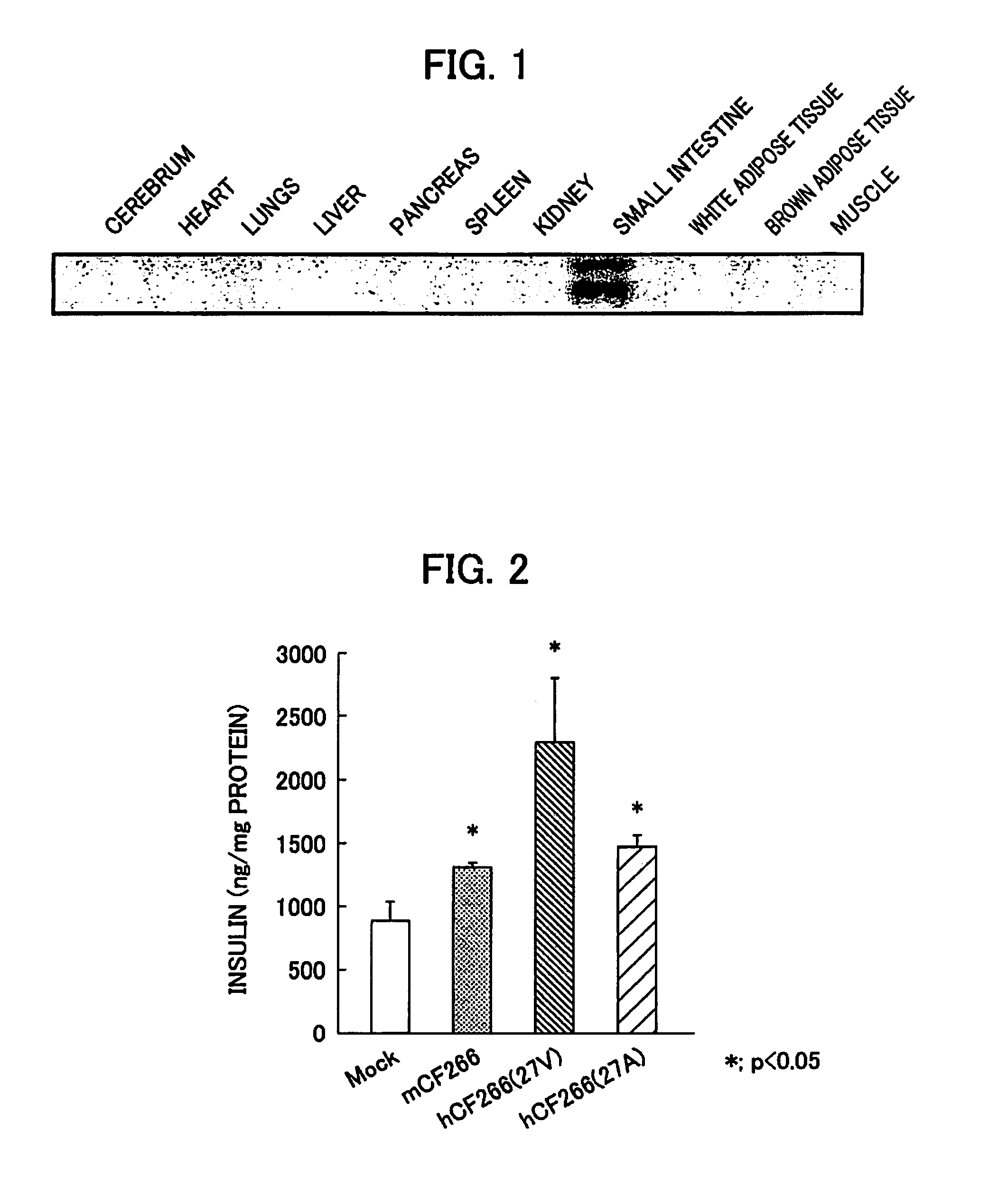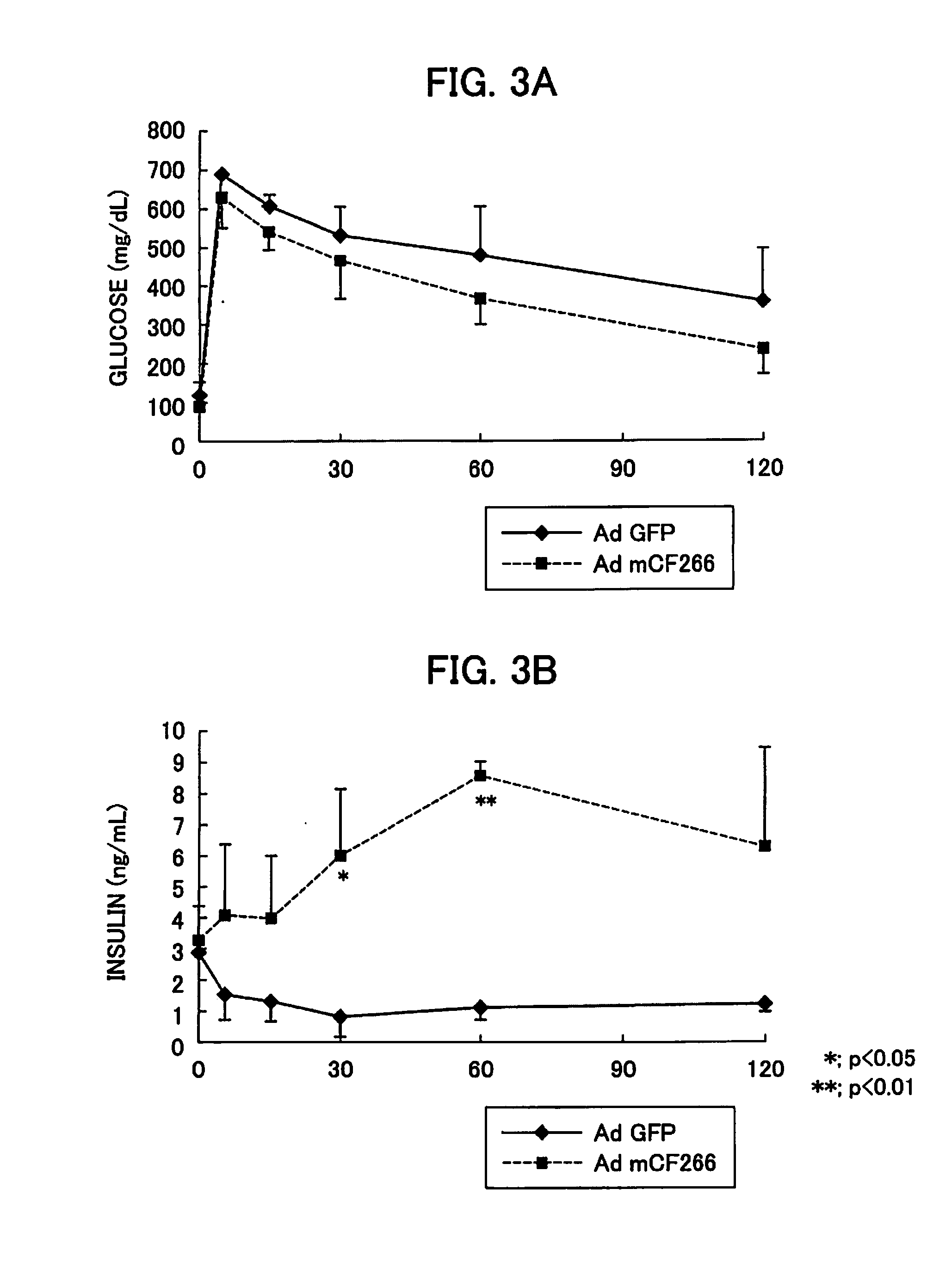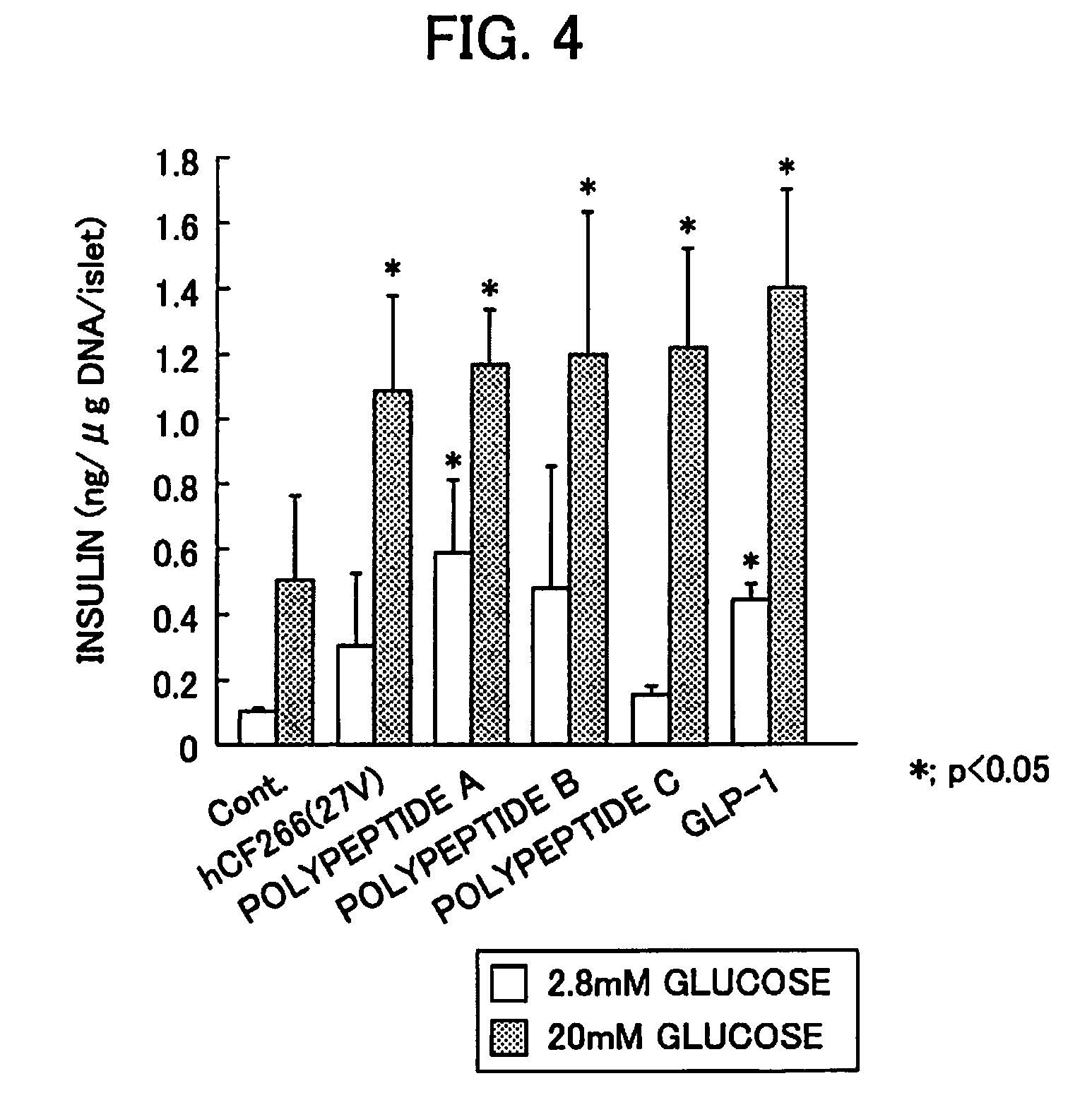Insulin secretion inducer, and accelerator for increasing the number of pancreatic beta-cells
a technology of pancreatic beta cells and inducers, which is applied in the direction of drug compositions, peptides, metabolic disorders, etc., can solve the problems of many facets remaining elusive and the absence of gastrointestinal hormones
- Summary
- Abstract
- Description
- Claims
- Application Information
AI Technical Summary
Benefits of technology
Problems solved by technology
Method used
Image
Examples
reference example 1
Site Expression Distribution of mCF266
[0090]In reference example 1, the distribution of expression by site of mRNA of mCF266 acquired from the alimentary tract of a mouse using an SST method was examined.
[0091]Firstly various organs and tissues (cerebrum, heart, lungs, liver, pancreas, spleen, kidney, small intestine, white adipose tissue, brown adipose tissue and muscle) were removed from a mouse and total RNA was extracted in accordance with the instruction manual attached to TRIzol (Invitrogen). Then hybridization was performed by preparing a membrane having 10 μg / lane according to a defined method and using a probe of cDNA (mRNA clone) formed from mCF266 labeled with [α-32P] dCTP. The results are shown in FIG. 1. As clearly shown by FIG. 1, mCF266 is specifically expressed in the small intestine.
embodiment 1
Action of Culture Supernatant of CF266 Transfected Cells on Cultured Cell Strain MIN6 from Murine Pancreatic β-Cells
[0092]In Embodiment 1, an action was confirmed with respect to MIN6 cells using a culture supernatant of a HEK293T cell strain originating from fetal kidney epithelial cells transfected with CF266.
[0093]Firstly, HEK293T cells subcultured in DMEM media enriched with 5% FCS and an antibiotic (penicillin 100 U / mL, streptomycin 10 mg / mL) were plated onto a 10 cm dish at a concentration of 1×106 cells / dish. On the following day, HEK292T cells were transfected with an expression vector for mCF266 (pCAGGS-mCF266) using a FuGENE6 (Roche) and mCF266 was forcibly expressed. After 24 hours, the media was exchanged for Opti-MEM media and after a further 24 hours, a culture supernatant was recovered.
[0094]Next, MIN6 cells subcultured in DMEM media (high glucose, Invitrogen) enriched with 15% FCS, an antibiotic (penicillin 100 U / mL, streptomycin 10 mg / mL) and 2-mercaptoethanol were ...
embodiment 2
Action of mCF266 with Respect to a Type-2 Diabetes Model KK / Ay Mouse
[0097]In the second embodiment, an adenoviral vector expressing mCF266 was used to confirm the action of mCF266 with respect to a KK / Ay mouse which is a type-2 diabetes model mouse.
[0098]Firstly an adenoviral vector (prepared using ViraPower which is a tradename of Invitrogen) constructed by linking mCF266 to a CAG promoter was intravenously injected at a concentration of 6×109 PFU / mL into the caudal vein of a 18-week old KK / Ay mouse (body weight approximately 47-51 g) given a high-fat high-sucrose diet. After four days, an intravenous glucose tolerance test (i.v. GTT) was performed by periodically taking blood and measuring the blood-glucose level of the serum and the insulin level.
[0099]The results are shown in FIG. 3A and FIG. 3B. In the figures, “Ad GFP” shows the results when using an adenoviral vector constructed by linking DNA encoding GFP in place of mCF266. As clearly shown by FIG. 3A and FIG. 3B, when mCF2...
PUM
 Login to view more
Login to view more Abstract
Description
Claims
Application Information
 Login to view more
Login to view more - R&D Engineer
- R&D Manager
- IP Professional
- Industry Leading Data Capabilities
- Powerful AI technology
- Patent DNA Extraction
Browse by: Latest US Patents, China's latest patents, Technical Efficacy Thesaurus, Application Domain, Technology Topic.
© 2024 PatSnap. All rights reserved.Legal|Privacy policy|Modern Slavery Act Transparency Statement|Sitemap



